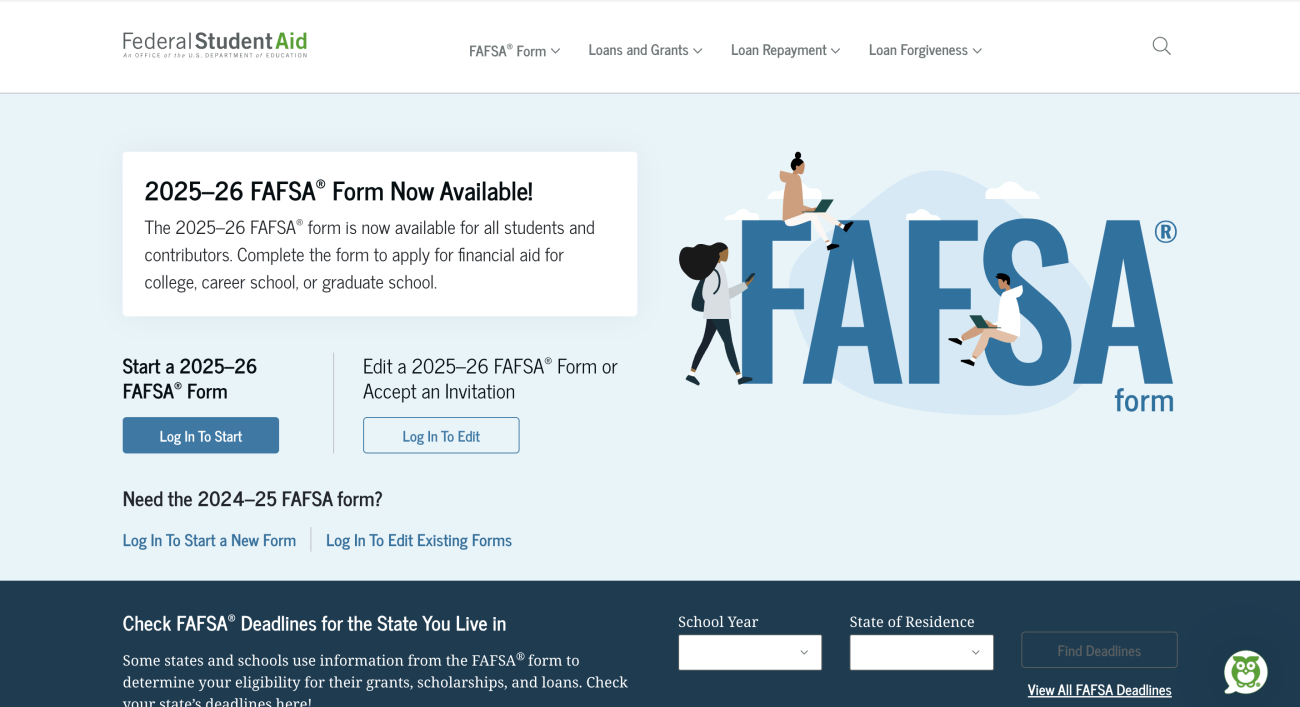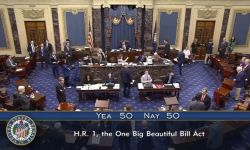FAFSA is live for 2025: Five things to know about Michigan college costs

- The 2025-26 Free Application for Federal Student Aid (FAFSA) is now available
- The FAFSA is a key form to determine if a Michigan student can get tuition-free community college or up to $27,500 to attend a four-year school
Current and future college students can now fill out the key federal form used to determine loans, grants, scholarships and work study, as the Free Application for Federal Student Aid (FAFSA) is now open for use.
Students fill out the form with information about which schools they are interested in and their family’s financial situation. Both private and public colleges use the submitted information in the form to determine if students qualify for federal, state or local funds to pay for college or trade school.
Filling out the FAFSA is key in determining if students qualify for a federal Pell grant, which is given to students from low-income backgrounds and generally does not need to be paid back.
The FAFSA is also needed for schools to determine if students or their family qualify for federal student loans. Filing out the FAFSA does not commit a student to taking out loans.
Related:
- Michigan universities lost first-year students. Decline was worse nationwide
- Pass or fail: How Trump’s education plans could impact Michigan kids
- Michigan economy in ‘soft patch,’ facing uncertainty under Trump, reports say
Last year’s rollout was a mess with delays and data errors, which experts said may have hurt fall 2024 enrollment.
The federal student aid website has a frequently asked questions webpage and resources on how to chat, call or email for FAFSA help.
Current high school students can also talk to their school counselor if they have questions, said Ryan Fewins-Bliss, executive director of the Michigan College Access Network.
Here are five things to know about getting into and paying for college in Michigan.m
1. A high school GPA of 3.0 or higher guarantees admission at 11 out of the 15 Michigan’s public universities
These 11 universities are part of the Michigan Assured Admission Pact. The guaranteed admission is only for high school graduates enrolling in their first fall semester of college. Students still have to apply directly to the schools they are interested in.
The universities are:
- Central Michigan
- Eastern Michigan
- Ferris State
- Grand Valley State
- Lake Superior State
- Northern Michigan
- Oakland
- Saginaw Valley State
- University of Michigan-Dearborn
- University of Michigan-Flint
- Wayne State
2. The FAFSA is a critical form needed to determine if students qualify for up to $27,500 to attend a private college or public university in the state
High school graduates who meet certain income requirements can get up to $5,500 a year for five years to earn a bachelor degree through the Michigan Achievement program.
The state scholarship program has other eligibility requirements outlined on the state website.
3. Filling out the FAFSA is needed to determine if students can attend their local community college tuition-free.
The state has programs to make local in-district tuition free for recent high school graduates and students 25 and older.
Students aged 21-24 can attend tuition-free but there’s a Dec. 31 deadline.
If students do not live in an area where the local community college collects taxes from residents, they can still get a discount on attending a community college of their choice.
4. Those with degrees tend to make more money than those without one
Michiganders with bachelor degrees earn a median wage of $63,100 five years after graduation, while those with high school diplomas earn a median wage of $29,700, according to state data.
That’s a $33,400 gap.
But many students take out student loans to pay for college. Bridge Michigan has an analysis here of how much debt borrowers have.
5. Joe Biden tried to forgive some federal student loans. He was unsuccessful. Donald Trump is unlikely to take up loan forgiveness
Federal student loan borrowers had their loan payments paused under the Trump and Biden administrations during the pandemic.
Those payments resumed last year. President Joe Biden tried to forgive up to $20,000 of student loans for qualified borrowers, but the Supreme Court blocked the effort. The Biden administration has forgiven some loans under existing programs and tried to forgive additional loans through other avenues.
His administration’s Saving on a Valuable Education (SAVE) repayment plan is tied up in the courts. CNN reports the Trump administration could choose to revoke the plan or stop defending it in court.
Ryan Fewins-Bliss, of the college access group, told Bridge he expects Trump will “immediately” pull out of federal cases about the loans.
Still, Fewins-Bliss said, if students are able to take out loans within their means and earn a degree or certificate that leads to a well-paying job, “that still is a win.”
Michigan Education Watch
Michigan Education Watch is made possible by generous financial support from:
Subscribe to Michigan Education Watch
See what new members are saying about why they donated to Bridge Michigan:
- “In order for this information to be accurate and unbiased it must be underwritten by its readers, not by special interests.” - Larry S.
- “Not many other media sources report on the topics Bridge does.” - Susan B.
- “Your journalism is outstanding and rare these days.” - Mark S.
If you want to ensure the future of nonpartisan, nonprofit Michigan journalism, please become a member today. You, too, will be asked why you donated and maybe we'll feature your quote next time!






